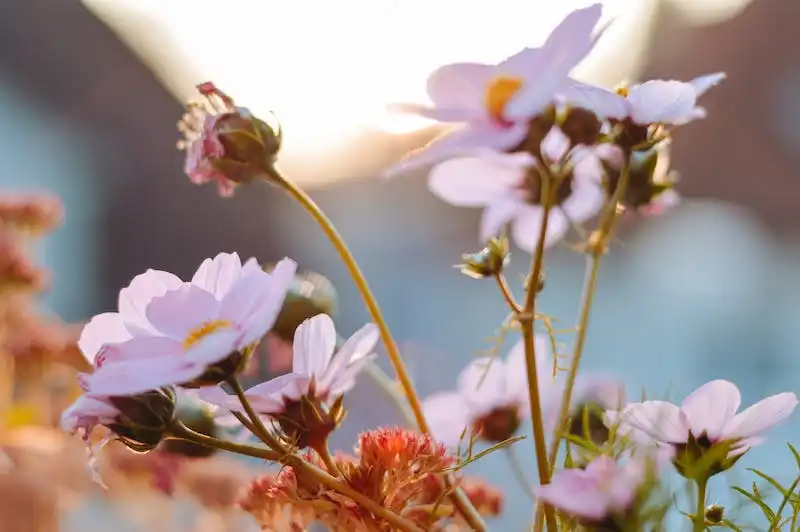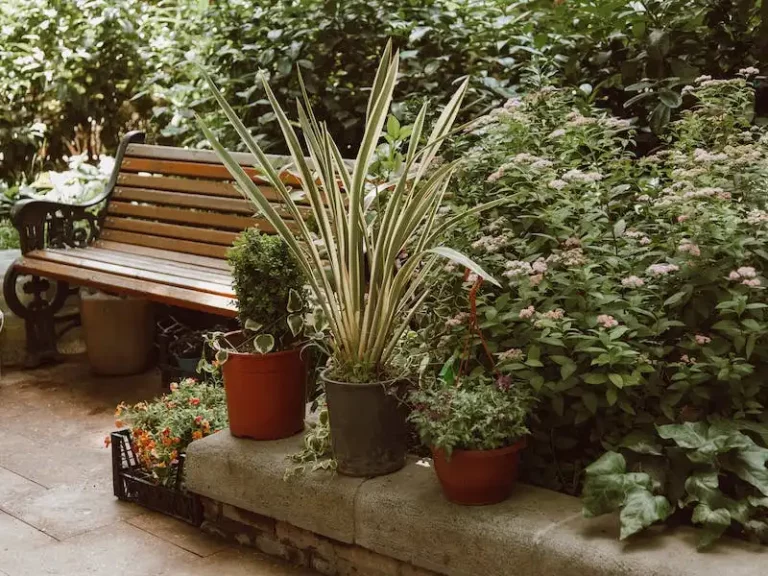Hello and welcome to our article on peperomias, the tropical plants that come in a wide range of stunning varieties. One of the most popular types of peperomias is the marbled argyreia, commonly called the watermelon peperomia. With its oval-shaped, dark green leaves and unique red veins that resemble the markings on a watermelon, this type of peperomia is truly a visual delight. Growing up to 4 inches in length, the watermelon peperomia is perfect for small spaces, hanging baskets, and even terrariums.
Another eye-catching type of peperomia is the baby rubber plant, also known as peperomia obtusifolia. With its dense whorled leaves and deep green color, this variety is often referred to as the jade peperomia. What makes these plants even more special is their ability to store water in their fleshy leaves, meaning they are quite low-maintenance and can survive with minimal watering. The rounded leaves of the baby rubber plant give it a unique and interesting appearance, making it a popular choice among plant enthusiasts.
If you’re looking for a peperomia variety with a touch of gold, the peperomia rotundifolia is the perfect choice. Its small-leafed beauty is often called the trailing jade or peperomia ripple. The golden veins running through its light green leaves create a striking contrast, making this type of peperomia a true standout. Its trailing nature makes it perfect for hanging baskets, where its delicate stems can flow gracefully.
Hope you enjoyed reading about these stunning peperomia types. Whether you prefer the watermelon peperomia with its marbled leaves, the jade peperomia with its compact, cupped foliage, or the golden-veined beauty of the peperomia ripple, there is certainly a peperomia variety to suit every plant lover’s taste. These easy-to-care-for plants are a wonderful addition to any indoor garden, bringing a touch of tropical charm and beauty to your home.
Peperomia Peperomia spp
Peperomia is a genus of plants in the Piperaceae family. There are many different types of beautiful Peperomia plants, including small-leafed varieties like Peperomia serpens and watermelon Peperomia. These plants have colorful and natural foliage, with variegated leaves that may be dark green, marbled, or have red or purple accents.
Peperomia plants are popular for indoor gardening because they adapt well to indoor conditions. They also have a unique shape and texture that adds visual interest to any space. Some common Peperomia varieties include Peperomia tetraphylla, Peperomia caperata, Peperomia japonica, and Peperomia clusiifolia.
One of the most unique Peperomia plants is the Peperomia puteolata, also known as the Parallel Peperomia. This plant has oval-shaped leaves that grow in a parallel pattern, resembling a little belly. Another interesting variety is the Peperomia prostrata, also known as the String of Turtles. This plant has small, round leaves with a marbled pattern that resembles the shell of a turtle.
Peperomia plants are generally easy to care for. They prefer bright, indirect light and should be kept away from direct sunlight. It’s important to water them thoroughly and allow the soil to dry out slightly between waterings. Peperomia plants also benefit from good drainage, so make sure to use a well-draining potting mix. They can be grown indoors or outdoors, depending on the local climate.
Peperomia plants are also known for their ability to adapt to different environments. For example, the Peperomia obtusifolia, also known as the Jade Peperomia, has thick, fleshy leaves that allow it to retain water and survive in drier conditions. On the other hand, the Peperomia glabella, also known as the Hope Peperomia, adapts well to humid environments and can even be grown in terrariums or bottle gardens.
Some Peperomia plants, like the Peperomia perciliata and Peperomia prostrata, have trailing or cascading growth habits, making them perfect for hanging planters or as trailing additions to a shelf or bookcase. Others, like the Peperomia emerald ripple, have more compact growth habits and are perfect for small spaces.
Overall, Peperomia plants are a beautiful addition to any indoor or outdoor space. Their unique shapes, colorful foliage, and adaptability make them a popular choice among plant enthusiasts. Whether you’re a beginner or a seasoned green thumb, there’s a Peperomia plant for everyone to enjoy!
Our favorite varieties
Peperomia plants come in a variety of shapes, sizes, and colors, making them a popular choice for plant enthusiasts. Here is an overview of our favorite varieties:
Watermelon Peperomia (Peperomia argyreia) has green, heart-shaped leaves with silver stripes that resemble the skin of a watermelon. It is a trailing plant that looks great in hanging baskets or cascading down shelves.
Ruby Peperomia (Peperomia caperata) has textured, dark green leaves with deep red undersides. Its unique foliage adds a touch of color to any space, and it is an excellent choice for terrariums.
Emerald Ripple Peperomia (Peperomia caperata ’emerald ripple’) has cupped, light-green leaves with metallic silver edges. Its wavy texture and vibrant coloring make it a standout in any collection.
Raindrop Peperomia (Peperomia polybotrya) is known for its large, glossy leaves that are shaped like raindrops. It adapts well to different environments and is easy to care for, making it perfect for beginners.
Variegated Cupid Peperomia (Peperomia scandens ‘variegated cupid’) features heart-shaped leaves with cream-colored edges. Its trailing vines can grow to impressive lengths, making it a fantastic choice for hanging planters.
Pearly Peperomia (Peperomia puteolata) has heart-shaped, dark green leaves adorned with silver stripes. The contrast between the deep green and silver markings adds a touch of elegance to any room.
Frost Peperomia (Peperomia caperata ‘frost’) has striking silver and green foliage that looks like it has been sprinkled with frost. Its unique coloration makes it a standout choice for plant enthusiasts looking for something a little different.
Peperomia Tetraphylla (Peperomia tetraphylla) or the “Pixie Lime” is a low-growing variety with small, round leaves that are light green in color. It is often used in terrariums or small pots and is a great choice for adding some greenery to your desk or office.
Peperomia Prostrata (Peperomia prostrata) or the “String of Turtles” has small, round leaves that resemble tiny turtles. It is a trailing plant that looks stunning in hanging baskets or cascading down shelves.
These are just a few of the many beautiful varieties of peperomias available. Whether you prefer variegated foliage, trailing vines, or unique textures, there is a peperomia plant that will suit your taste and style. Their compact size and easy care make them a great choice for both experienced gardeners and beginners alike.
Beetle Peperomia
One of the brighter and more colorful varieties of Peperomia is the Beetle Peperomia. Also known as Watermelon Peperomia, this plant features vibrant green leaves with red veins that resemble the markings on a watermelon rind.
The leaves of the Beetle Peperomia grow in vine-like fashion, making it a popular choice for hanging baskets or trailing plants in a south-facing window. Some varieties, such as the Peperomia Scandens ‘Ruby’, have a metallic sheen to their leaves, giving them a truly unique look.
Occasionally, the Beetle Peperomia may produce small, white, and inconspicuous flowers on a slender inflorescence that resembles a rat-tail. While the flowers themselves are not particularly showy, they do add a touch of interest to the plant.
The Beetle Peperomia is native to Central and South America, where they’re found growing as epiphytic houseplants. If you’re looking to add a touch of color to your home, the Beetle Peperomia is a perfect choice. Its heart-shaped leaves and trailing stems make it a great addition to any plant collection.
Some popular varieties of Beetle Peperomia include Peperomia Angulata, Peperomia Japonica, Peperomia Rotundifolia, Peperomia Puteolata ‘Variegata’, and Peperomia Caperata. Each variety has its own unique attributes, such as the emerald green leaves of Peperomia Graveolens or the cloud-like foliage of Peperomia Prostrata.
Beetle Peperomia plants are easy to care for and can thrive in a variety of conditions. They prefer bright, indirect light and should be watered when the top inch of soil feels dry to the touch. They’re also relatively tolerant of neglect, making them a great option for those new to houseplants.
In summary, Beetle Peperomia plants are a popular and colorful choice for plant enthusiasts. With their unique foliage and easy care requirements, they’re perfect for adding a touch of beauty to any home.
Belly Button Peperomia
The Belly Button Peperomia is a small-leafed trailing plant, also known by its scientific name Peperomia prostrata. It gets its name from the tight, compact growth habit, making it a perfect plant for hanging baskets or trailing out of containers.
The leaves of the Belly Button Peperomia typically glow with a metallic sheen, looking almost like miniature teardrop-shaped leaves. The center of the leaves can have a ruby red variegation, giving it a unique and eye-catching appearance. The compact nature of this plant makes it one of the most desirable and sought-after varieties of Peperomia.
When it comes to care, the Belly Button Peperomia is relatively easy to grow. It does well in a range of light conditions, from bright indirect light to lower light areas indoors. However, it is important to protect it from direct sun, as it can scorch the leaves. This plant prefers well-draining soil, so make sure to choose a pot with good drainage.
The Belly Button Peperomia is a diverse species with many different varieties. Some popular ones include Peperomia ‘Isabella’ with its heart-shaped leaves and Peperomia ‘Emerald Ripple’ with its wavy edges. Another favorite is Peperomia ‘Cupid’, which has vines that can grow up to 12 inches in length.
The Belly Button Peperomia can add a splash of color to any indoor space with its red or variegated leaves. Its compact size and low maintenance requirements make it an excellent choice for both experienced and beginner plant enthusiasts. So why not learn more about this beautiful Peperomia variety and consider adding it to your plant collection?




